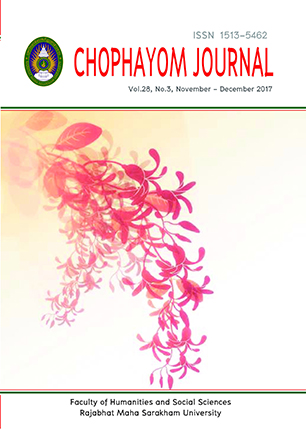A model for Moral Improvement in Savings of Students in Nonthaburi Secondary Schools
Keywords:
analyze causal factors affecting saving moralityAbstract
Abstract
The purposes of this research were to (1) analyze causal factors affecting saving morality of students in Nonthaburi secondary schools, (2) to design a model for moral improvement in savings of the students and (3) to implement and evaluate the model. The research methodology was divided into threephases. In the first phases, the researcher investigated and analyzed eight causal factors which affected saving morality of secondary school students. The data was collected using questionnaire from 396samples from secondary school students in the second semester of 2016 inNonthaburi Province. Taro Yamane method was used to calculated the sample size, and they were selected by the proportional stratified random sampling techniques. The data was analyzed by Structural Equation Model: SEM, LISREL for Windows with Path Analysis at the .05 level of statistical significance. In the second phases, the researcher designed and developed a model for moral improvement in savings of the secondary school students in Nonthaburi secondary schools based on the data of first phase. The model for moral improvement in savings was assessed by 30 experts consisting of five academicians, five school administrators, five teachers of the student affairs, five students, parents, and ten excellent students of morality. In the third phases, the voluntary samplesubject were7411th grade students of SatreeNonthaburi secondary school. They were divided into two groups: experimental and controlgroups. The model was implemented to 7411th grade students of the experimental group. The data was analyzed by Multivariate Analysis of Covariance: MANCOVAat the .05 level of statistical significance. . Results of the research were as follows: 1. The research findings showed that the five major causal factors were related to the saving morality of the students at the .05 level of the statistical significance. The causal factors consisted of 1) imitating their parent, behaviors (0.87) 2) imitating their friends, behaviors (0.24) 3) Media imitation ( 0.16) 4) discipline (0.09) and 5) imitating their Teachers, behaviors (0.04) respectively. 2. The model for moral improvement in savings of the secondary school students consisted of ten
activities: 1) could you listen to me?, 2) acquaintance, 3) sufficient economy,4) rescuing bomb, 5) spending friends, money, 6) money management, 7) real hero of money management, 8) usefulness of things, 9) teacher Idol and 10) motivational activities. 3. Finally, the overall saving morality of the experimental students was better than that of the controlled students in comparison, with the controlled students, and the overall variables in saving behaviors of the experimental students and the controlled students were different at the .05 level of statistical
significance.






